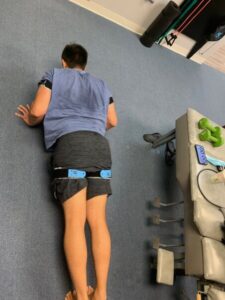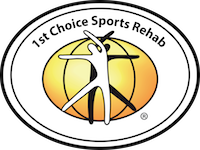Blood Flow Restriction Therapy (BFR) is a cutting-edge rehabilitation technique that transforms how we approach physical therapy and sports chiropractic practices. This method strategically uses a pneumatic cuff to restrict blood flow in a specific limb temporarily and creates a unique physiological response that accelerates healing.
BFR therapy is administered by skilled practioners who utilize controlled arterial and venous blood flow occlusion. It triggers muscle activation and increases muscle strength in the targeted extremity. The cuff-induced outflow restriction encourages muscle growth and enhances muscle mass, leading to quicker rehabilitation and improved outcomes.
In this article, we are going to understand the science behind blood flow restriction therapy. Discover how this innovative approach can help you regain strength and mobility while minimizing downtime in your rehabilitation journey.
Optimize Your Workout with Blood Flow Restriction Exercise
Blood Flow Restriction (BFR) exercise, also known as blood flow restricted training (BFR training). It is a transformative approach to enhancing your fitness regimen by strategically applying external pressure.
Typically using a specialized blood pressure cuff, BFR training restricts blood flow to targeted muscle groups during exercise. This unique technique induces metabolic stress, activating myogenic stem cells and creating an environment that fosters muscle hypertrophy, even with lower resistance loads.

The effects of blood flow restriction on muscle are profound, leading to strength gains and muscle growth similar to high-load resistance training. BFR exercise harnesses the power of mechanical tension and allows you to reap the benefits of high-intensity training while lifting lighter loads. Whether you’re a postoperative patient, an athlete in rehabilitation, or someone seeking to boost their strength and size, BFR exercise can help you achieve your goals efficiently.
Unlock Faster Recovery: The Science Behind BFR
Discover the science behind Blood Flow Restriction (BFR) therapy, an innovative rehabilitation modality making waves in the sports rehab world. BFR therapy utilizes occlusion pressure to restrict blood flow while maintaining arterial inflow, optimizing the metabolic stress on muscles.
BFR’s efficacy is at the heart of its ability to activate myogenic stem cells, triggering muscle hypertrophy and reducing muscle atrophy. This therapeutic approach benefits patients undergoing ACL reconstruction or knee surgery, allowing them to make more significant strength gains during their rehabilitation journey. The benefits of BFR extend beyond rehabilitation; athletes in any phase of their training can experience significant muscle growth and reduced muscle soreness through this technique.
Explore the mechanisms of blood flow restriction and its application in high-intensity training. Learn how BFR therapy sessions and resistance training maintain arterial inflow while occluding venous outflow distal to the occlusion site, fostering muscle strength and size. Uncover the science behind BFR’s potential to revolutionize your exercise routine and unlock faster recovery for various fitness goals.
Maximize Gains with Blood-Flow Restriction Exercise Training
Blood-flow restriction (BFR) exercise training has emerged as a revolutionary method for those seeking to maximize muscle gains and optimize their workout routines. By utilizing a specialized blood pressure cuff to restrict blood flow during exercise, BFR training triggers metabolic stress and activates myogenic stem cells, fostering muscle hypertrophy.

This approach is particularly beneficial for individuals recovering from injuries, postoperative patients, and athletes in various phases of rehabilitation. BFR exercise training helps reduce muscle atrophy and accelerate strength gains.
Discover how this technique can be used in chiropractic clinics, sports rehab centers, and general fitness settings. With the right amount of pressure, BFR training offers a unique and efficient way to enhance muscle strength and size while lifting lighter loads, making it a valuable addition to any exercise regimen.
Rehabilitation with BFR: Faster Healing, Stronger Results
Rehabilitation with Blood Flow Restriction (BFR) therapy is a dynamic approach that accelerates healing and yields impressive results in strength and muscle hypertrophy. By strategically applying a blood pressure cuff to restrict blood flow, BFR creates metabolic stress, activating myogenic stem cells and facilitating muscle growth.
BFR plays a pivotal role in helping patients recover faster and more effectively in rehabilitation. This technique is especially beneficial for individuals post-ACL reconstruction or knee surgery. BFR reduces muscle atrophy and enables patients to gain greater strength.
Preventing Muscle Atrophy with Blood Flow Restriction Therapy
Blood Flow Restriction (BFR) therapy is a potent ally in the battle against muscle atrophy. By carefully controlling blood flow using a blood pressure cuff, BFR creates metabolic stress and activates myogenic stem cells, pivotal in preserving and enhancing muscle mass.

This technique is precious for individuals recovering from injuries, such as ACL reconstruction or knee surgery, and those dealing with conditions that lead to muscle loss. BFR effectively prevents muscle atrophy.
Conclusion
BFR therapy offers a unique approach to rehabilitation for patients recovering from surgeries like ACL reconstruction or knee surgery. It is a game changer helping individuals to regain strength and mobility efficiently.

